-
Pentagon: Global Hawk Drone “not operationally effective”
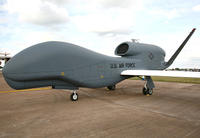
The Pentagon has declared the latest Northrop Grumman Global Hawk drone “not operationally effective”; according to a report by the Pentagon’s weapon testers, the RQ-4B Global Hawk Block 30 could only provide 40 percent of the coverage requested; “Mission-critical components fail at high rates, resulting in poor takeoff reliability, high air abort rates, low mission capable rates, an excessive demand for critical spare parts and a high demand for maintenance support”; Pentagon officials declined to discuss the drone in too much detail but did say that they were working with Northrop Grumman to make improvements to the drone; defense officials have scheduled a production meeting for this month to discuss the program
-
-
Future UAVs will emulate birds
Engineers at UC San Diego are mimicking the movement of bird wings to help improve the maneuverability of unmanned aerial vehicles (UAVs); this is important, because UAVs are quickly becoming popular tools for the armed forces, and there are also a myriad of civilian applications which are rapidly developing, such as border control, wildfire monitoring, search and rescue, and traffic observation
-
-
DARPA crowd-source next-gen UAV design
DARPA has announced its UAVForge competition for the design of a user-intuitive, backpack-portable UAV which is also quiet, can stay aloft for at least three hours, and can fly in harsh condition; in addition to the $100,000 prize, the winning team will have the opportunity to showcase its design in an overseas military exercise
-
-
Researchers tout efficacy of reporting suspicious activity in foiled terror plots
Following the death of Osama bin Laden and with fears of a retaliatory attack on the rise, public policy researchers are touting the efficacy of the new “See Something Say Something” campaign which encourages individuals to report any suspicious activity they see; of the sixty-eight stopped terrorist attacks from 1999 to 2009, nearly 40 percent of the plots were stopped following a report of suspicious activity; critics say that the “See Something Say Something” campaign inundates law enforcement officials with tips that could take valuable time and resources from real investigations
-
-
Saudi Arabia seeks $330 million worth of night vision gear
Saudi Arabia is looking to buy $330 million worth of night vision and thermal vision equipment from the United States; the U.S. government agency facilitating the deal says the proposed sale would bolster Saudi Arabia’s capability to meet current and future threats from potential adversaries during operations conducted at night and during low-visibility conditions
-
-
A team of robots collaborate in exploration, map building
Researchers have developed an advanced autonomous capability for first responders, law enforcement, and the military: a group of robots, working by themselves and communicating only with one another, divide up among themselves a variety of exploration tasks — for example, they can go into a building and within minutes transmit a detailed floor map to humans waiting at a command center nearby
-
-
Arlington, Texas hopes to keep aerial drone
The police department of Arlington, Texas is examining ways to fund an unmanned surveillance drone; the drone was originally purchased with grant money from DHS to assist local police officers with security during Super Bowl XLV held at Cowboys Stadium in Arlington last February; the drone is still technically owned its unidentified manufacturer and the City Council is debating how to pay for the drone’s operation and maintenance
-
-
Quadrotor micro UAVs go mainstream
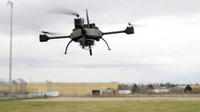
A Canadian company develops small quadrotor micro UAVs for use by law enforcement, first responders, and the military; the company’s Scout has a range of three kilometers and maximum speed of 50 kilometers per hour; it can fly through wind gusts of up to 80 km/h, and can cope with harsh weather conditions; the Scout is light — it weighs about one kilogram — and can be carried disassembled in a case and be assembled quickly by snapping its rotors into the main body
-
-
Surveillance cams removed from Muslim neighborhood in U.K.
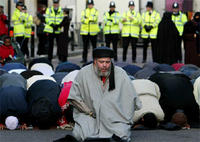
Local law enforcement officials in the United Kingdom have begun to uninstall more than 200 surveillance cameras from a predominately Muslim neighborhood in Birmingham; the installation of the cameras was met with fierce criticism, especially after residents had learned that some cameras were hidden; residents were particularly incensed because they were not consulted during the planning process; in October Chief Constable Chris Sims agreed to remove the cameras in order to regain the trust of the community
-
-
7/7 attacks could not have been prevented: report

An inquest into the 7 July 2005 attack on London transportation concluded that any suggestion MI5 could have stopped the attacks was “based to a considerable extent on hindsight”; there were failures in the response by emergency workers — confusion, a shortage of first aid supplies, and radios that did not work underground, but the report concludes that government errors had not increased the death toll
-
-
Goodyear changes blimps to Zeppelins

There are few things more familiar to Americans than the Goodyear Blimp; no major sporting event would be complete without one of these blimps hovering overhead; during its long operational history, Goodyear has built and operated more than 300 airships; currently, the company has a fleet of three blimps, based in Ohio, Florida, and California; these blimps are reaching the end of their operational life, and Goodyear has signed an agreement with German company ZLT Zeppelin Luftschifftechnik to supply Goodyear with airships well into the next decade; the new Goodyear-Zeppelin airships will be slightly larger than the airships in Goodyear’s current fleet, fly faster, carry more passengers, and include state-of-the art avionics and flight control systems
-
-
APDN helps prevent government use of fake microchips
Applied DNA Sciences Inc. (APDN) recently announced that it is working with the U.S. government to prevent the use of counterfeit microchips in mission-critical hardware that can lead to potential life-threatening equipment failures; the company is launching a pilot program in conjunction with the government that is designed to ensure that phony microchips do not enter critical supply chains; with the growth of outsourcing and global production chains, pirated microchips have begun appearing in everything from cell phones to fighter jets; the New York based firm specializes in the development of plant based DNA markers that can be safely inserted into any material to ensure its authenticity
-
-
Phantom Ray completes maiden flight
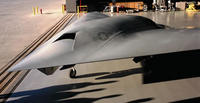
Phantom Ray, Boeing’s fighter-sized unmanned airborne system (UAS), took to the early morning skies on 27 April at Edwards Air Force Base in California for its maiden flight; Phantom Ray is one of several programs in Boeing’s Phantom Works division, including Phantom Eye, which is part of a rapid prototyping initiative to design, develop, and build advanced aircraft and then demonstrate their capabilities
-
-
Texas lawmakers fight for more drones
Texas lawmakers are pushing federal officials to deploy more unmanned aerial vehicles (UAVs) along the state’s southern border with Mexico; currently one Predator drone patrols the skies above Texas’ border and the Gulf Coast, while three Predators operate out of Arizona and one in North Dakota; Representative Henry Cuellar (D-Texas) and two other congressman from Texas recently met with state and federal officials to lobby for the additional deployment of drones
-
-
Geographers predicted bin Laden's hideout location
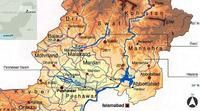
They do not work for the CIA or military intelligence, but undergraduate students at UCLA two years ago helped develop an analytical tool which allowed them to predict Osama bin Laden’s hiding place — well, almost predicted: their model said that there was a 80.9 percent chance that bin Laden was hiding in the town of Abbottabad, where he was killed on Sunday by U.S. special forces; the students used a theory called “island biogeography”; the theory says that species on large islands are much more likely to survive a catastrophic event than species on small islands; “The theory was basically that if you’re going to try and survive, you’re going to a region with a low extinction rate: a large town,” says the professor who guided the research
-
- All
- Regional
- Water
- Biometrics
- Borders/Immig
- Business
- Cybersecurity
- Detection
- Disasters
- Government
- Infrastructure
- International
- Public health
- Public Safety
- Communication interoperabillity
- Emergency services
- Emergency medical services
- Fire
- First response
- IEDs
- Law Enforcement
- Law Enforcement Technology
- Military technology
- Nonlethal weapons
- Nuclear weapons
- Personal protection equipment
- Police
- Notification /alert systems
- Situational awareness
- Weapons systems
- Sci-Tech
- Sector Reports
- Surveillance
- Transportation
Advertising & Marketing: advertise@newswirepubs.com
Editorial: editor@newswirepubs.com
General: info@newswirepubs.com
2010-2011 © News Wire Publications, LLC News Wire Publications, LLC
220 Old Country Road | Suite 200 | Mineola | New York | 11501
Permissions and Policies
Editorial: editor@newswirepubs.com
General: info@newswirepubs.com
2010-2011 © News Wire Publications, LLC News Wire Publications, LLC
220 Old Country Road | Suite 200 | Mineola | New York | 11501
Permissions and Policies
